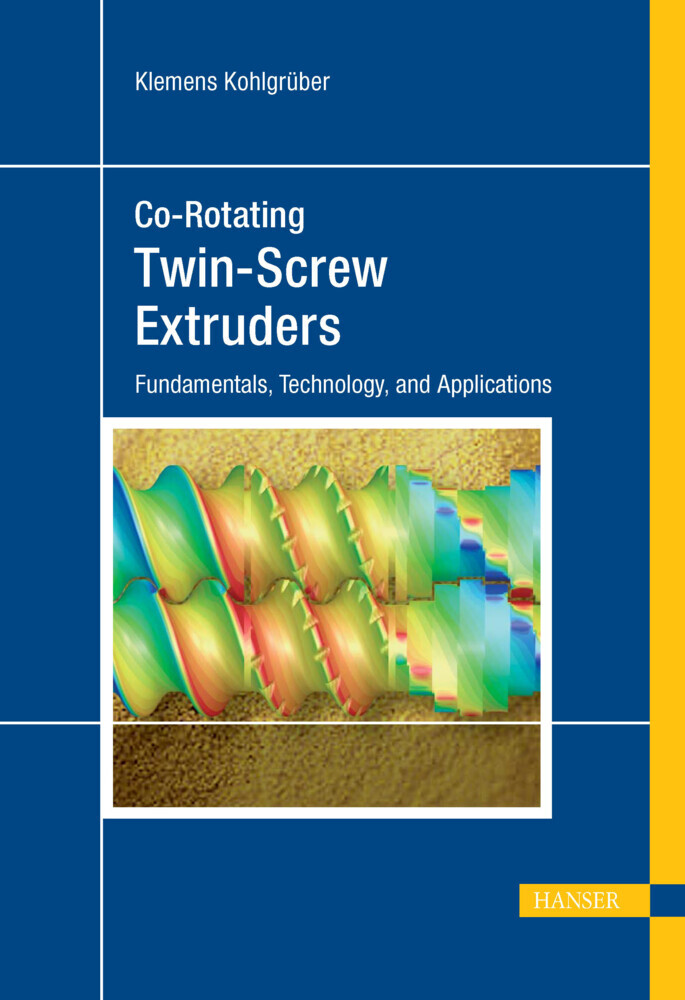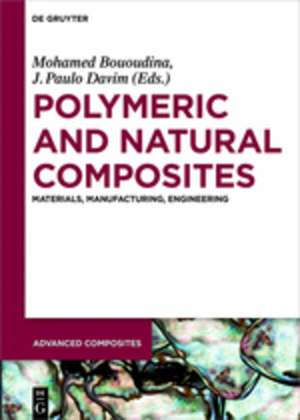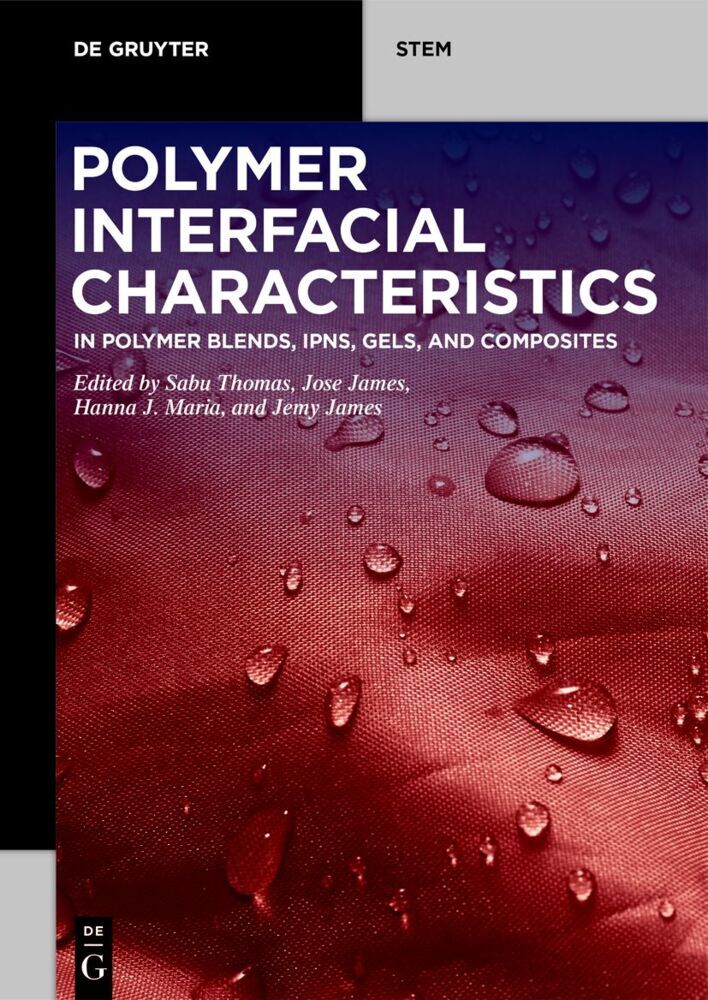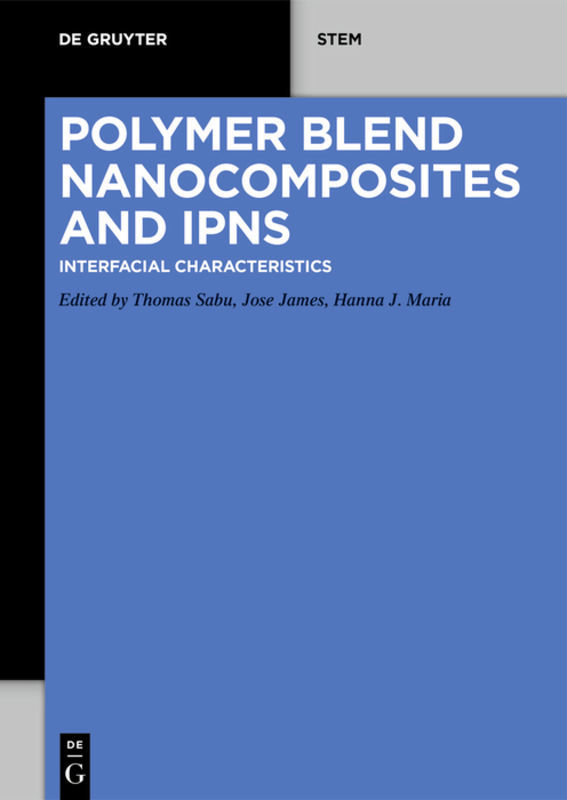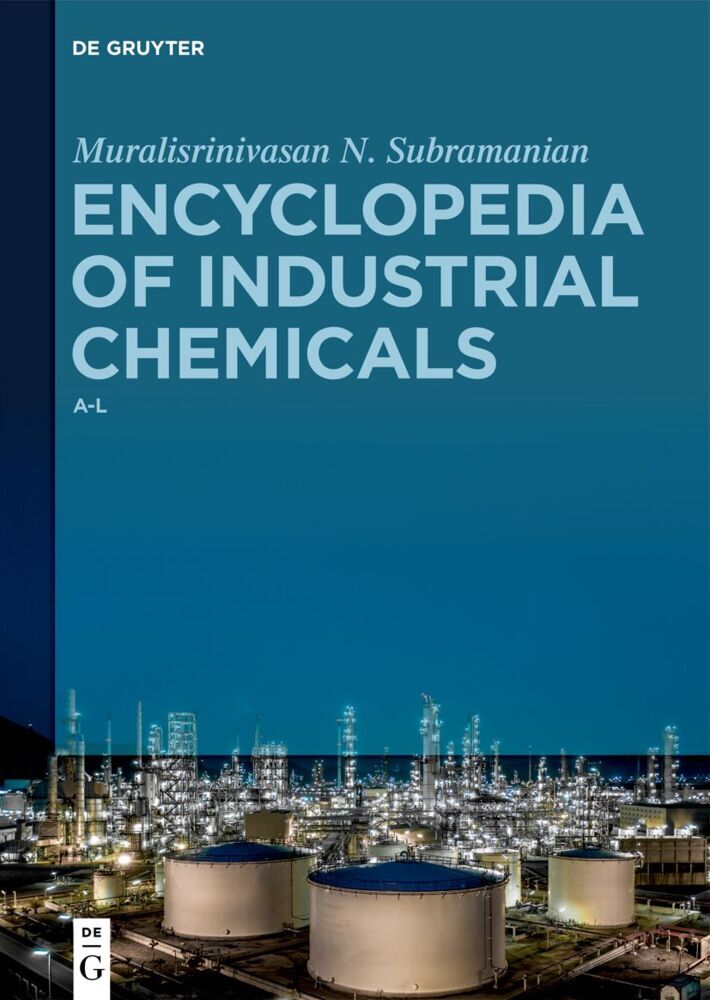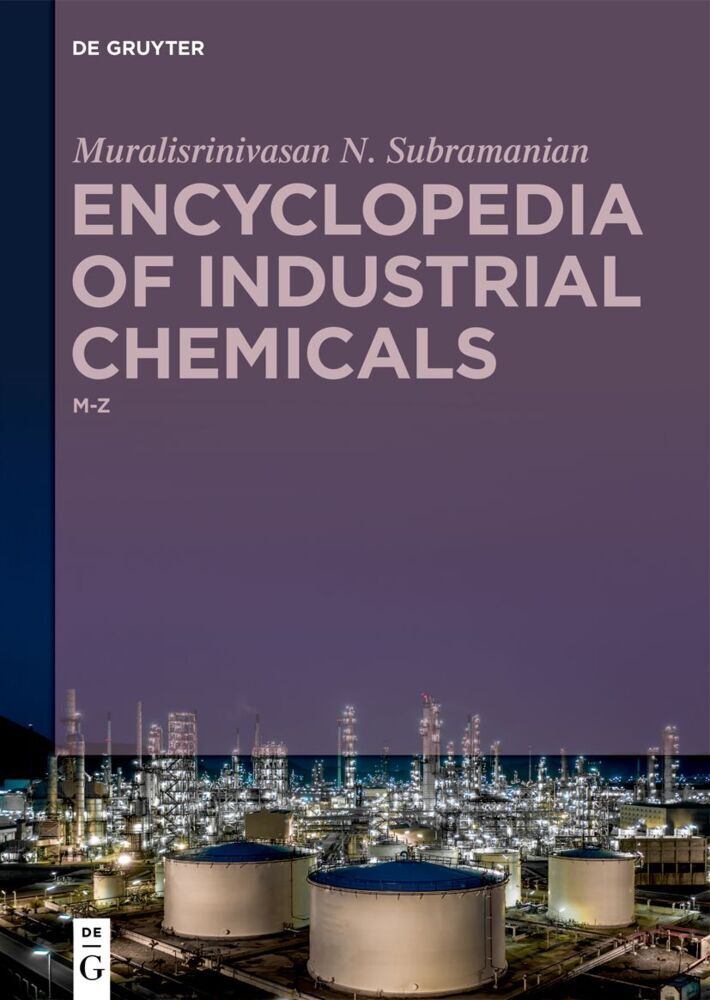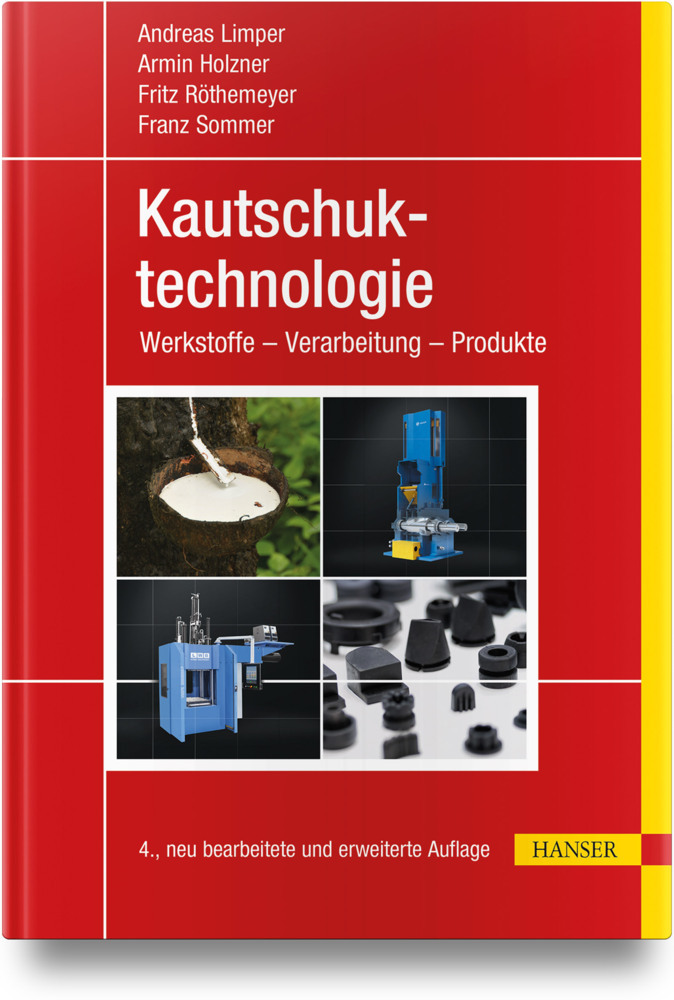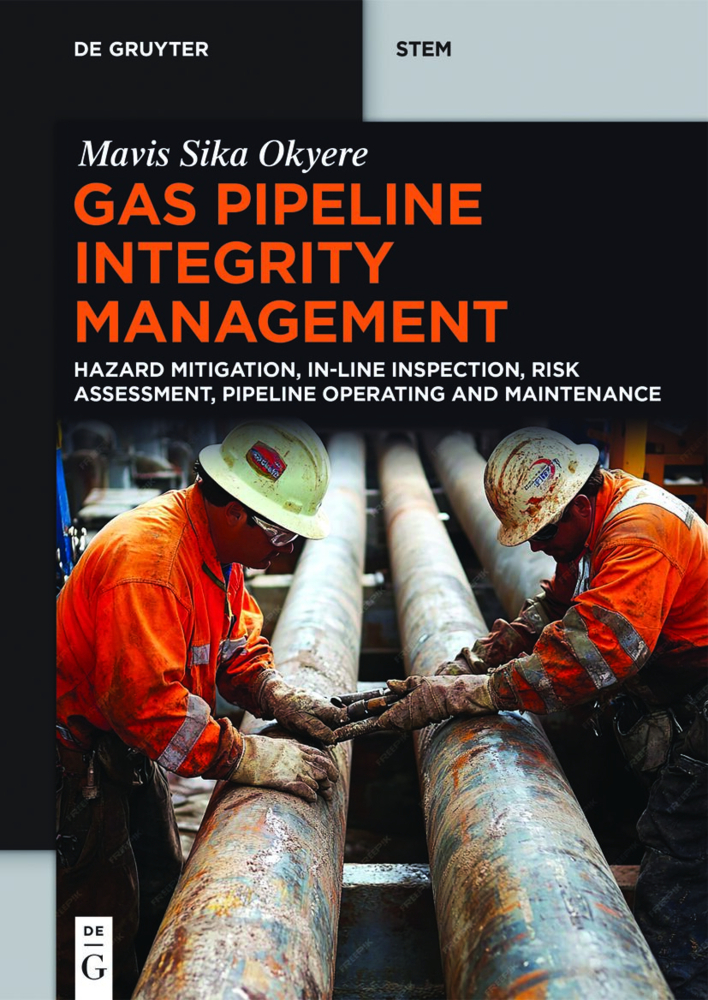Co-Rotating Twin-Screw Extruder
Co-rotating screws and/or extruders are used in many branches of industry for producing, preparing and/or processing highly viscous materials. They find a wide variety of applications especially in the plastics, rubber and food industries.
Co-rotating twin-screw machines usually have modular configurations and are thus quite flexible for adapting to changing tasks and material properties. Well-founded knowledge of machines, processes and material behavior are required in order to design twin-screw extruder for economically successful operations.
This book provides basic engineering knowledge regarding twin-screw machines; it lists the most important machine-technical requirements and provides examples based on actual practice. Better understanding of the processes is emphasized as this is a prerequisite for optimizing twin-screw designs and operating them efficiently. Besides basic functions, such as compounding, the book focuses on:
- the historical development of twin-screws
-the geometry of the screw elements (fundamentals, basic patents, patents overview)
-material properties and material behavior in the machine
-fundamentals of feed behavior, pressure build-up and power input
-examples of applications for various processing tasks
-compounding: tasks, applications, processing zones
-potential and limits of modeling
-scaling-up various processes
-machine design incl. drives and materials
Co-rotating twin-screw machines usually have modular configurations and are thus quite flexible for adapting to changing tasks and material properties. Well-founded knowledge of machines, processes and material behavior are required in order to design twin-screw extruder for economically successful operations.
This book provides basic engineering knowledge regarding twin-screw machines; it lists the most important machine-technical requirements and provides examples based on actual practice. Better understanding of the processes is emphasized as this is a prerequisite for optimizing twin-screw designs and operating them efficiently. Besides basic functions, such as compounding, the book focuses on:
- the historical development of twin-screws
-the geometry of the screw elements (fundamentals, basic patents, patents overview)
-material properties and material behavior in the machine
-fundamentals of feed behavior, pressure build-up and power input
-examples of applications for various processing tasks
-compounding: tasks, applications, processing zones
-potential and limits of modeling
-scaling-up various processes
-machine design incl. drives and materials
1;Preface;62;Contents;83;1 Introduction;164;2 Historical Development of Co-RotatingTwin Screw Extruders;244.1;2.1 Introduction;244.2;2.2 Early Developments;244.3;2.3 Pioneering Period;354.4;2.4 New High Viscosity Technology with Co-RotatingExtruders;384.5;2.5 Special Developments from Bayer-Hochviskostechnik(High Viscosity Technology Group);424.6;2.6 Developments after Licensing;444.7;2.7 Developments after Expiration of the Primary Patents;475;3 Rheological Properties of Polymer Melts;505.1;3.1 Introduction and Motivation;505.2;3.2 Classification of Rheological Behavior of Solidsand Fluids;505.3;3.3 Comparison of Viscous Fluid and Viscoelastic Fluid;555.4;3.4 Temperature Dependence of Shear Viscosity;595.5;3.5 Influence of Molecular Parameters on RheologicalProperties of Polymer Melts;625.6;3.6 Shear Flows;645.7;3.7 Extensional Flows;676;4 General Overview of the CompoundingProcess: Tasks, Selected Applications,and Process Zones;726.1;4.1 Compounding Tasks and Requirements;726.2;4.2 Tasks and Design of the Processing Zones of aCompounding Extruder;746.3;4.3 Characteristic Process Parameters;876.4;4.4 Process Examples;916.5;4.5 Technical Trends in Compounding;996.6;4.6 Symbols and Abbreviations;1037;5 Geometry of the Co-Rotating Extruders:Conveying, and Kneading Elements;1067.1;5.1 Introduction;1067.2;5.2 The Fully Wiped Profile from Arcs;1077.3;5.3 Geometric Design of Closely Intermeshing Profiles;1097.4;5.4 Dimensions of Screw Elements with Clearances;1107.5;5.5 Transition between Different Numbers of Threads;1137.6;5.6 Calculation of a Screw Profile for Production Accordingto Planar Offset;1147.7;5.7 Conveying Characteristics of Different Geometries;1167.8;5.8 Kneading Elements;1178;6 Modeling: Possibilities and Limitations;1208.1;6.1 The Motivation for Modeling;1208.2;6.2 Screw Design;1218.3;6.3 Modeling Approaches;1228.4;6.4 Model Dimensions;1238.5;6.5 Extruder: 0-Dimensional;1258.6;6.6 Extruder: 2-Dimensional;1288.7;6.7 Extruder: 1-Dimensional;1298.8;6.8 Extruder: 3-Dimensional;1328.9;6.9 Simulation: Possibilities and Limitations;1359;7 Pressure Generation and Energy Input inthe Melt;1369.1;7.1 Operating Conditions of Conveying Screw Elements;1369.2;7.2 Illustration of Dimensionless Groups;1389.3;7.3 Calculation of the Back-Pressure Length;1439.4;7.4 Efficiency during Pressure Generation;1449.5;7.5 Example for the Design of a Pressure Build-Up Zone;1459.6;7.6 Pressure and Energy behavior with Shear Thinning;14610;8 Computational Fluid Dynamics;15410.1;8.1 Why Computational Fluid Dynamics?;15410.2;8.2 Workflow of a Computational Fluid Dynamics Process;15510.3;8.3 Computational Examples;15710.4;8.4 Conclusion and Outlook;17111;9 Mixing and Dispersing: Principles;17411.1;9.1 Introduction;17411.2;9.2 Distributive Mixing;17411.3;9.3 Dispersive Mixing;18211.4;9.4 Determining the Mixing Quality;18812;10 Degassing Polymer Melts with Co-RotatingTwin Screw Extruders;19612.1;10.1 Requirements for Degassing;19612.2;10.2 Function-Specific Design;19812.3;10.3 Process Limits;20812.4;10.4 Scale-Up;20912.5;10.5 Process Examples;20912.6;10.6 Conclusion;21613;11 Simulation or Scale-Up -Alternatives for Extruder Layout?;21813.1;11.1 Process Sections of the Compounding Extruder;21813.2;11.2 Computation Possibilities for Discharge Parts;22513.3;11.3 Scale-Up;22614;12 Screw Elements for Co-rotating, CloselyIntermeshing, Twin-Screw Extruders;23014.1;12.1 Design of the Screw Element;23014.2;12.2 Combining Screw Elements;23314.3;12.3 Screw Elements and How They Work;23515;13 Overview of Patented Screw Elements;25216;14 The ZSK Series and Applications in theChemical Industry and for Renewable RawMaterials;27616.1;14.1 Development of High Torques, Volumesand Screw Speeds;27616.2;14.2 Torque-Limited and Volume-Limited Throughputs;28116.3;14.3 Process-Dependent Energy Requirement;28316.4;14.4 Chemical and Pharmaceutical Applications;28716.5;14.5 Applications for Renewa
Kohlgrüber, Klemens
| ISBN | 9783446433410 |
|---|---|
| Artikelnummer | 9783446433410 |
| Medientyp | E-Book - PDF |
| Copyrightjahr | 2012 |
| Verlag | Carl Hanser Fachbuchverlag |
| Umfang | 368 Seiten |
| Sprache | Englisch |
| Kopierschutz | Digitales Wasserzeichen |

